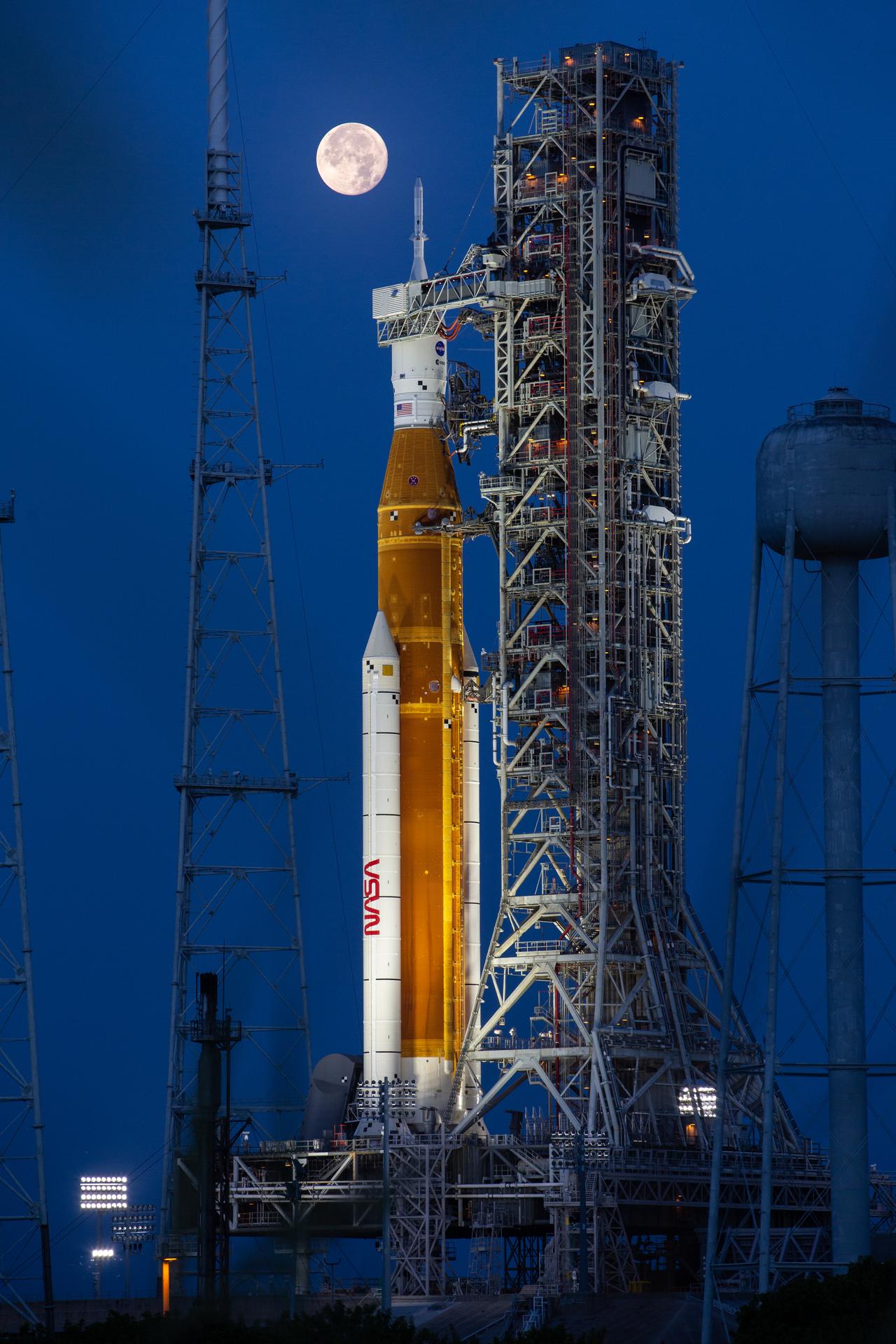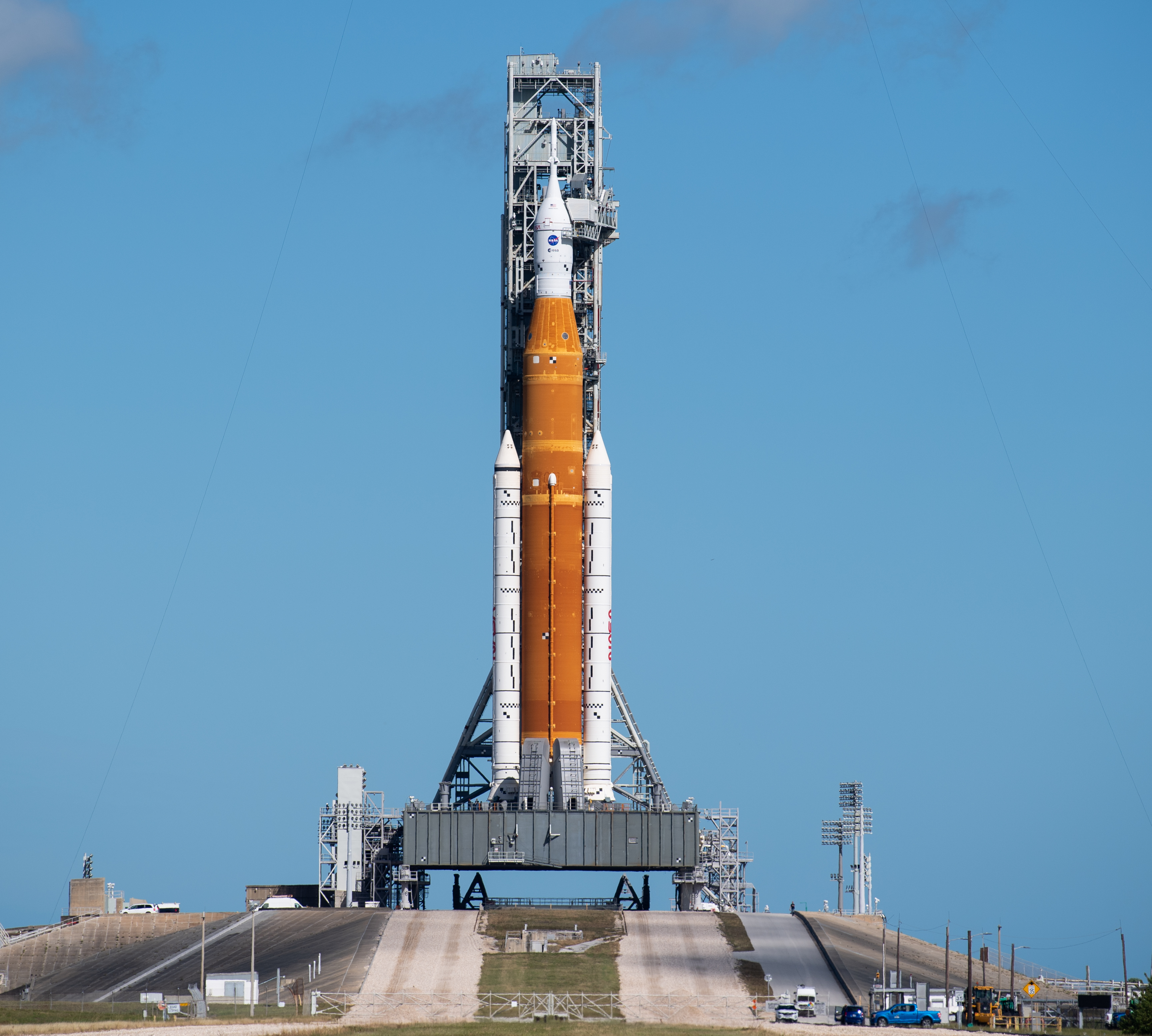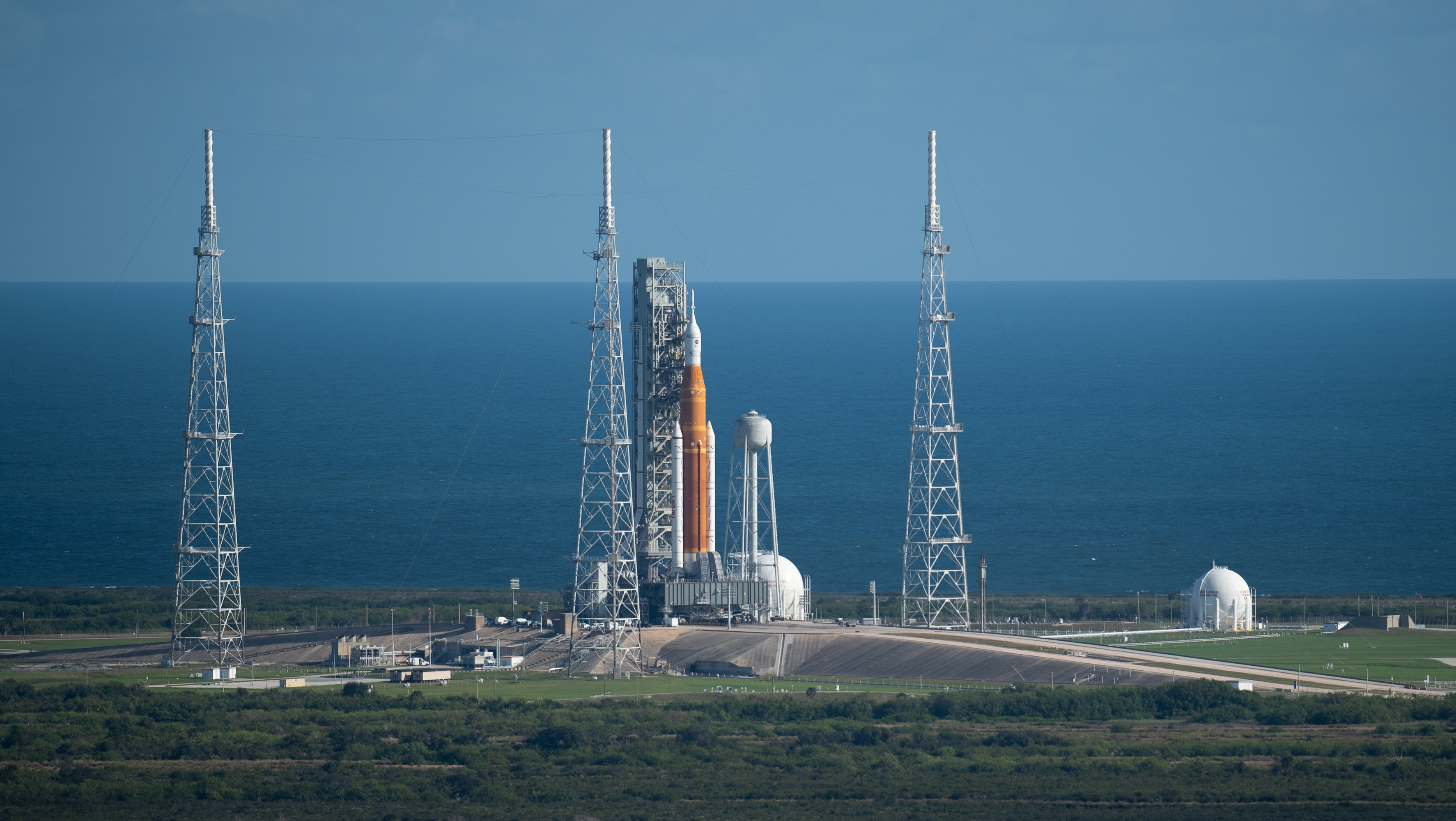Space Launch System (SLS) is a large United States rocket designed to carry crewed missions to the moon. The SLS measures 322 feet (98 meters) in height, taller than the Statue of Liberty. It weighs 5.75 million pounds (2.6 million kilograms). It is the second most powerful rocket ever successfully launched. Only the Starship rocket built by the American company SpaceX is more powerful. 


The SLS is a two-stage, expendable rocket. The first stage uses engine and fuel technology developed for the space shuttle program. Each SLS rocket uses two solid boosters, which burn a special chemical called polybutadiene acrylonitrile. The four main SLS engines burn liquid hydrogen and liquid oxygen. Together, the first stage produces 8.8 million pounds (39 million newtons) of thrust. The second stage burns liquid hydrogen and liquid oxygen to produce 24,750 pounds (110,100 newtons) of thrust.
The SLS traces its roots to the end of the space shuttle program. In 2003, the space shuttle Columbia broke apart during reentry, killing the seven astronauts on board. The disaster prompted the United States National Aeronautics and Space Administration (NASA) to develop a new rocket system to replace the space shuttle, which would be retired following the completion of the International Space Station (ISS). In 2010, Congress funded a modified version of the proposed program, originally called Constellation, changing its name to Space Launch System.
The first SLS launch took place in 2022. It propelled the uncrewed Artemis 1 mission around the moon (see Artemis).
